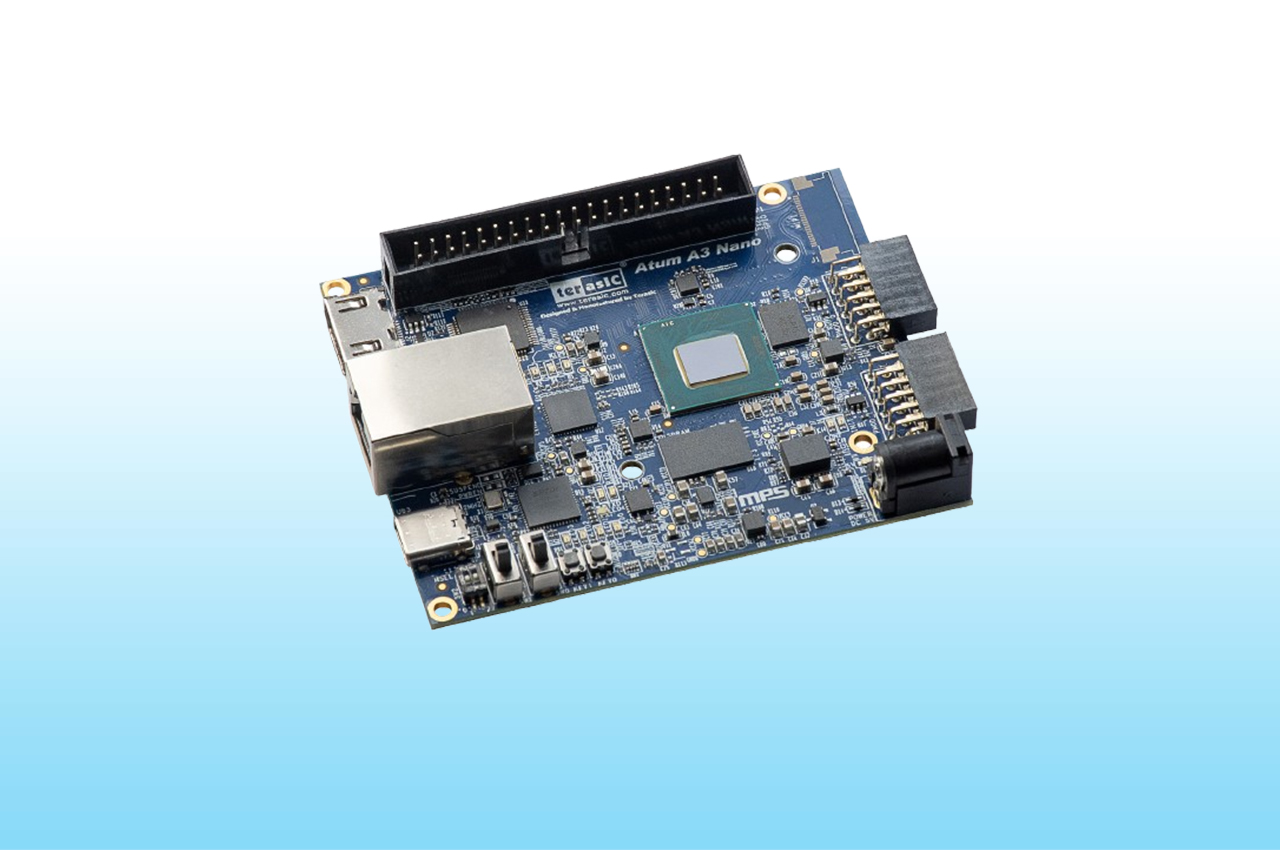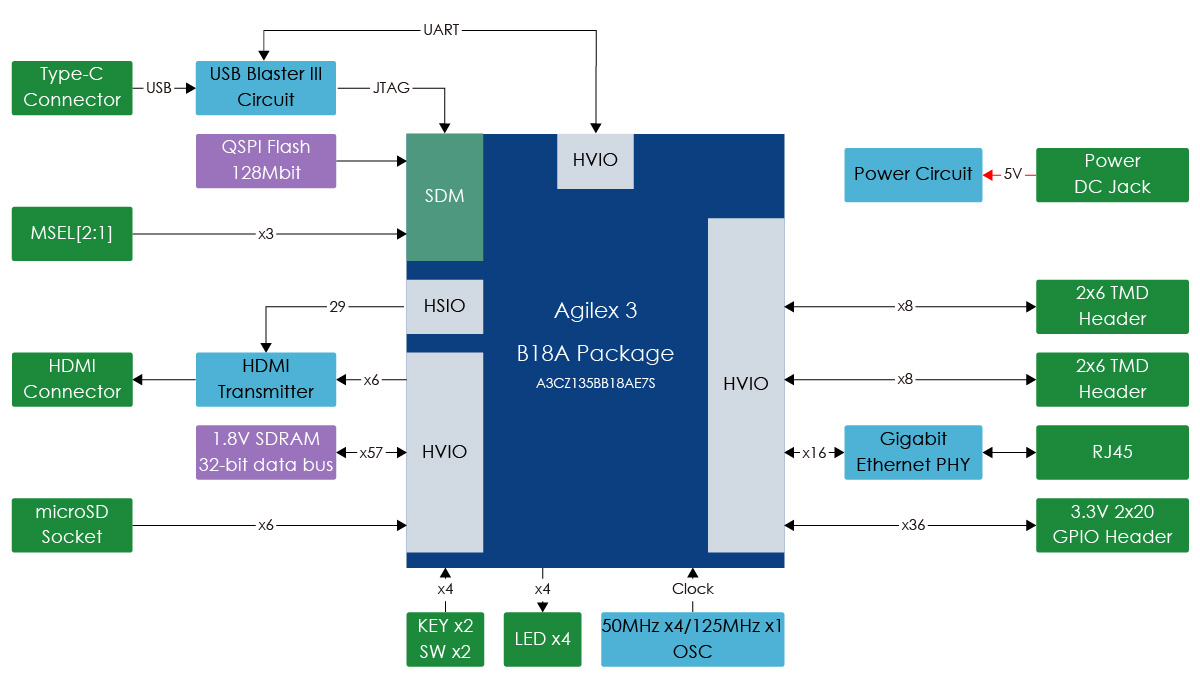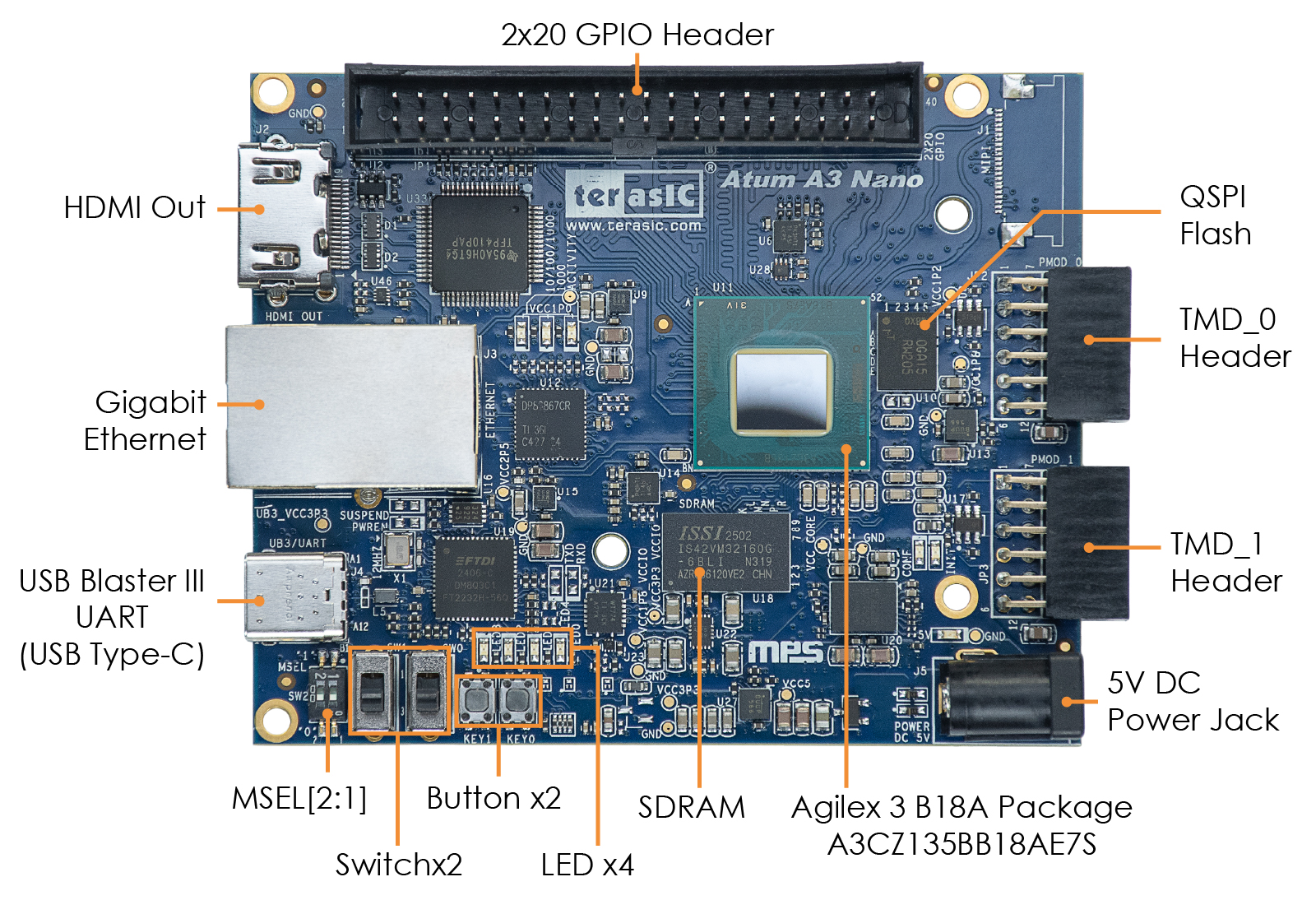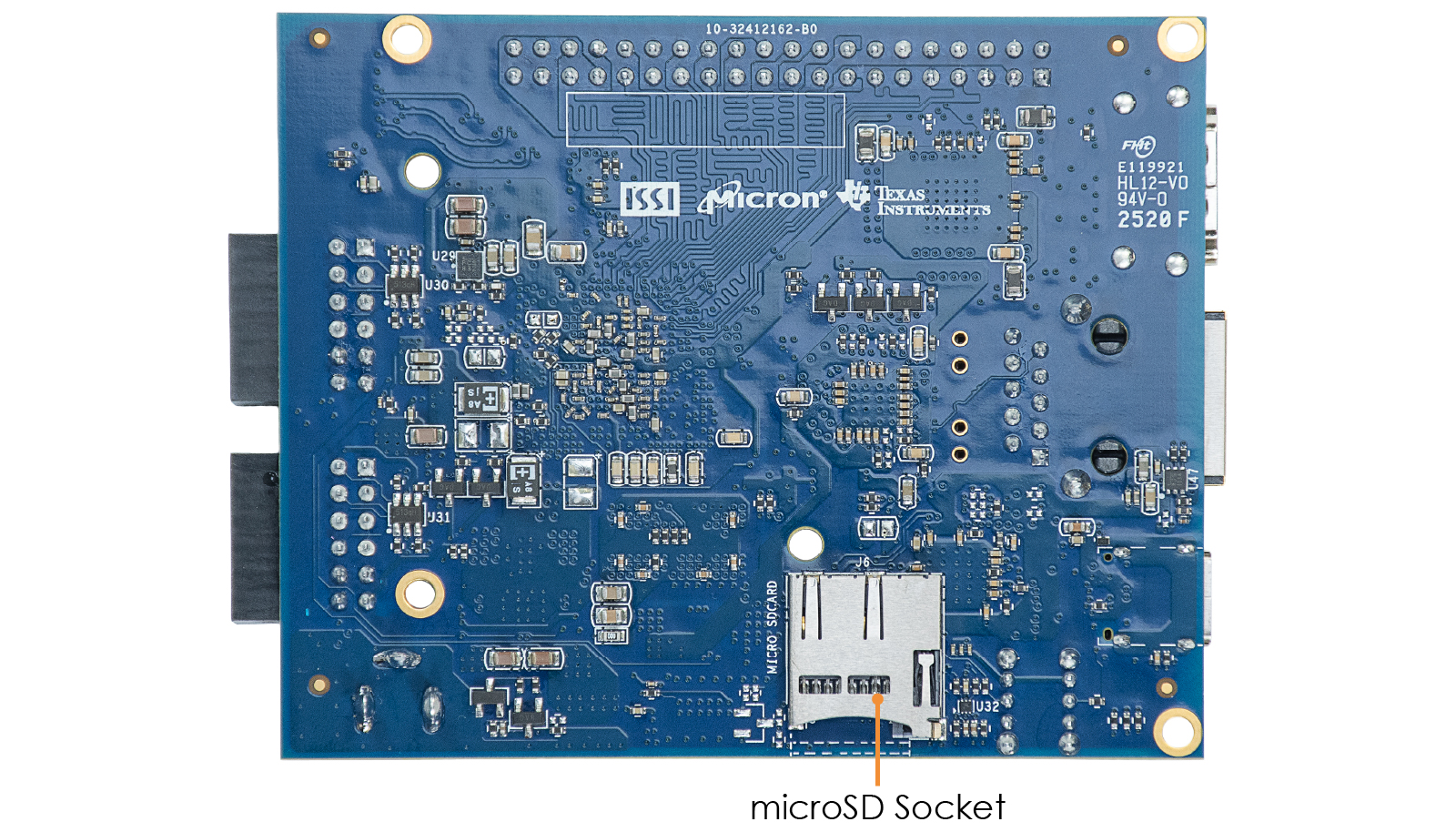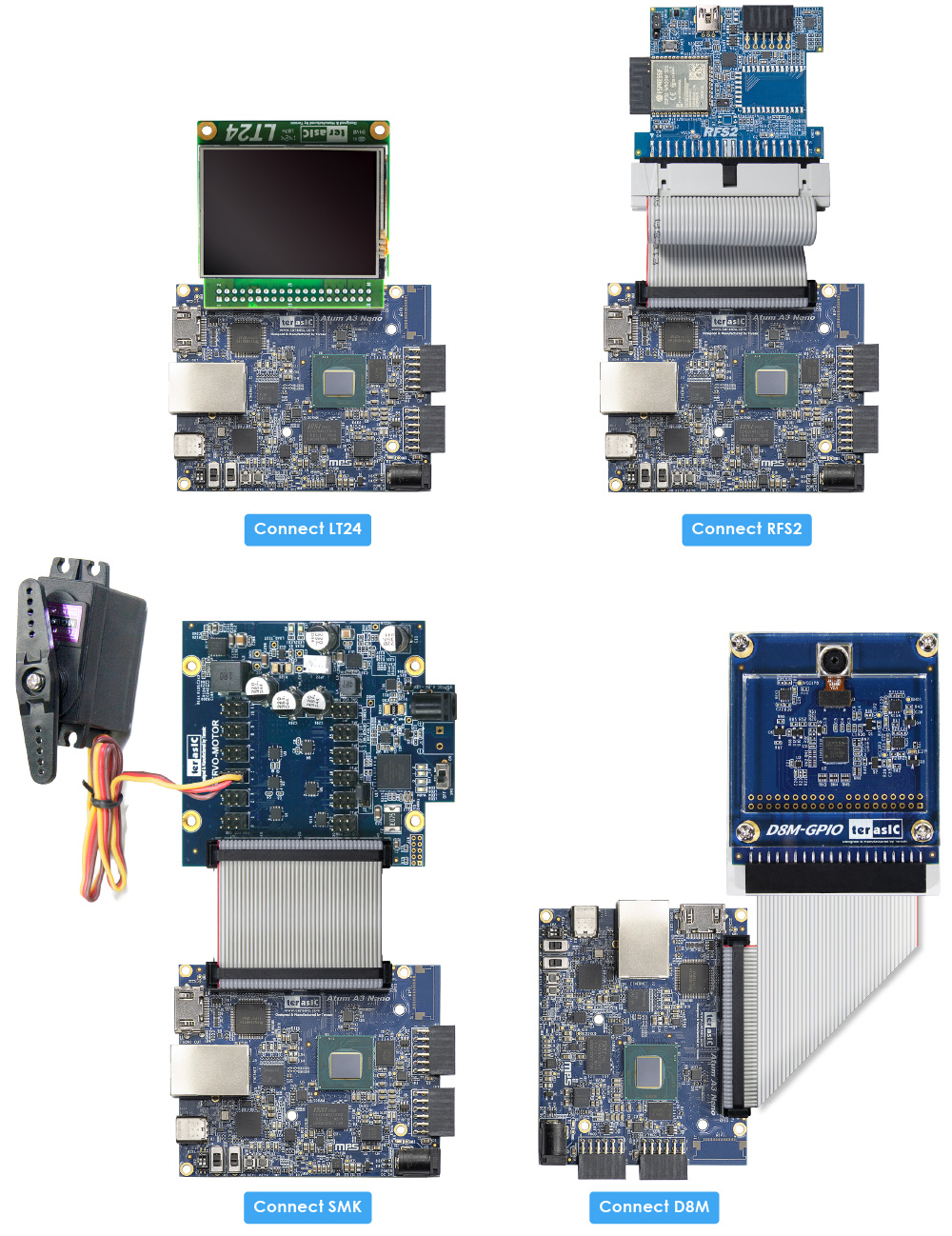Terasic has launched the Atum Nios V Starter Kit, a feature-rich FPGA development platform built to accelerate design and testing with Altera’s Nios V processor. This kit targets embedded engineers, system developers, and educators who want a hands-on way to explore RISC-V–based embedded systems on the Agilex 3 FPGA platform.
At the core of this kit lies the Atum A3 Nano board, powered by the Agilex 3 A3CZ135BB18AE7S FPGA. The device delivers 135,110 logic elements, integrated memory blocks, multipliers, and multiple PLLs that enable efficient implementation of compute-heavy and signal-driven workloads. This combination provides the flexibility needed for advanced embedded, communication, and multimedia applications.
A few days ago, we covered another FPGA development board from the same company — the Terasic DE25-Nano, featuring an Agilex 5 FPGA with an ARM Cortex-A76/A55 HPS. Feel free to check it out if you’re interested in exploring that board as well.
Atum Nios V Starter Kit Block Diagram
The Atum A3 Nano board Specifications:
Atum Nios V Starter Kit based on Atum A3 Nano board. It is based on the Agilex 3 A3CZ135BB18AE7S FPGA, which has 135,110 logic elements, 6.89 Mbit M20K and 1.4 Mbit MLAB on-chip memory, 368 multipliers and a few PLAs used to control timing. By such a combination, designers can create high-level logic structures, real-time signal-processing pipelines, and embedded control systems on a small board.
In memory and configuration, the kit has 64 MB SDRAM, which is linked to a 32-bit data bus, and a microSD card socket giving external storage. A Type-C on-board USB Blaster III interface (programming and debugging access) and the 128 Mbit QSPI Flash (configuration in ASx4 mode) are also available. The board includes Gigabit Ethernet and UART connectors to communicate, and HDMI to use when building a visual or multimedia project. The interfaces enable developers to directly attach displays, networked devices, or sensors to the board without adapters.
.
Atum A3 Nano board (top view)
The expansion board has a single 2×20-GPIO connector and two 2×6 PMOD-compatible connectors, both of which are 3.3 V logic. Projects can be customized by attaching other modules to the developers like cameras, ADCs or wireless adapters. The user-control features comprise of two slide switches, four LEDs, and two push buttons and are thus easy to test and monitor in real time designs. The board uses a 5 V DC input and has a small size, which means that it could be used to experiment in the desktop as well as demonstrate in classrooms.
Atum A3 Nano board (bottom view)
The Atum A3 Nano board works with Intel Quartus Prime Pro Edition, which provides design, simulation, and debugging tools in a single environment. Users can compile HDL designs, implement IP cores, and test RISC-V-based Nios V firmware without switching platforms. The USB Blaster III interface allows direct programming and real-time debugging. Combined with example projects, the software flow helps users move quickly from schematic design to fully functional FPGA prototypes.
Connectivity to Atum A3 Nano
The Atum Nios V Starter Kit includes the Atum A3 Nano board with a pre-installed heatsink, acrylic casing, USB Type-C cable, and a 5V/2A power supply. Priced at $179, it offers an affordable platform for learning and development with Intel Agilex 3 technology. Ideal for universities, research labs, and embedded developers, the kit is available through Terasic’s official store and authorized distributors. More information can be found on the product page.
